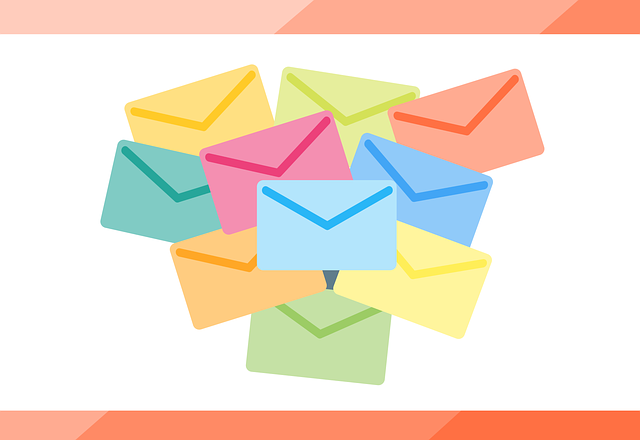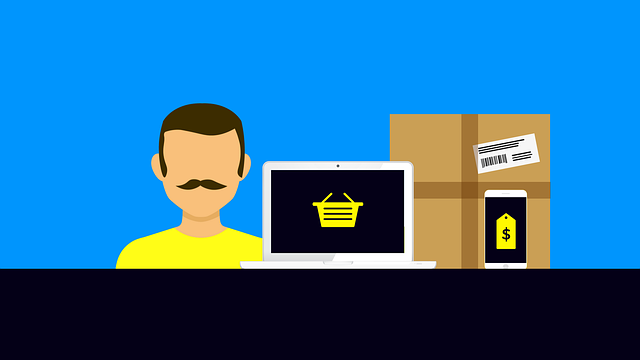Get ready to launch your product with a bang! In the world of digital marketing, two heavyweights go head to head: email marketing and social media.
Like two sides of a coin, each has its own advantages and unique capabilities. But which one should you choose to maximize your product launch success? In this comprehensive comparison, we will weigh the pros and cons of email marketing and social media, allowing you to make an informed decision that suits your business needs.
Reach is the name of the game, and both email marketing and social media excel in their own ways. From conversion rates and sales to cost effectiveness, personalization and customization, tracking and analytics, and integration and synergy, we will delve deep into each aspect, providing you with concrete data and insights to guide your decision-making process.
So, whether you’re a seasoned marketer or just starting out, buckle up and get ready to discover which marketing strategy will give your product the boost it deserves. Let’s dive into the world of email marketing versus social media for product launches!
Key Takeaways
- Email marketing has a higher conversion rate and engagement compared to social media.
- Social media allows for reaching a larger and diverse audience, while email marketing enables personalized communication.
- Integrating and synergizing email marketing and social media enhances marketing campaigns and increases overall reach and engagement.
- Tracking and analyzing campaign performance in real-time is a key benefit of email marketing.
Target Audience Reach
You’ll be able to reach a larger and more diverse audience through social media, as it allows you to connect with people from all walks of life and engage them with visually appealing content.
Social media platforms like Facebook, Instagram, and Twitter have billions of active users, providing immense potential for reaching a wide range of people. Additionally, social media allows for targeting specific demographics and interests, ensuring that your message is delivered to the right audience.
However, email marketing also has its strengths. While it may not have the same reach as social media, email marketing allows for more personalized communication and has the potential to yield higher conversion rates and sales. By sending targeted emails to a curated list of subscribers, you can create a more tailored experience and optimize the frequency of your communications to avoid overwhelming your audience.
Transitioning into the next section about conversion rates and sales, it’s important to consider how different strategies can impact your overall marketing success.
Conversion Rates and Sales
Boost your sales and watch your conversion rates soar as you tap into the persuasive power of email marketing and social media for your product launches.
When it comes to conversion rate optimization, both email marketing and social media advertising have their strengths. Email marketing allows for personalized and targeted messaging, resulting in higher conversion rates. According to a study by DMA, email marketing has an average conversion rate of 4.24%, compared to social media’s average of 0.59%.
Social media, on the other hand, excels in driving engagement and generating brand awareness. With its vast user base and advanced targeting options, social media advertising can reach a wider audience and potentially increase sales.
As we delve into the next section about cost effectiveness, it’s important to consider the overall impact of these strategies on your bottom line.
Cost Effectiveness
If you’re looking for a cost-effective way to promote your product, consider utilizing low-cost and free social media platforms.
With a wide range of options available, you can reach a large audience without breaking the bank.
Additionally, maximize your return on investment by implementing targeted email marketing campaigns.
By tailoring your messages to specific customer segments, you can increase the likelihood of conversions and ultimately boost your sales.
Utilize Low-Cost and Free Social Media Platforms
Utilizing low-cost and free social media platforms is like unleashing a flock of colorful birds into the digital sky, spreading your product launch message far and wide without breaking the bank. Here are three ways to make the most of these platforms:
-
Leveraging organic growth: By regularly posting engaging content and interacting with your audience, you can increase your organic reach without spending a dime. Encourage your followers to share your posts and tag their friends to amplify your message.
-
Leveraging influencers: Collaborating with influencers in your industry can give your product launch a significant boost. Find influencers whose audience aligns with your target market and work with them to create content that showcases your product.
-
Utilizing user-generated content: Encourage your audience to create and share content featuring your product. This not only generates buzz but also serves as social proof, showing potential customers that others are excited about your launch.
With these strategies, you can maximize your reach and impact on social media. However, to truly maximize ROI, it’s important to complement your social media efforts with targeted email marketing campaigns.
Maximize ROI with Targeted Email Marketing Campaigns
Maximize your return on investment and captivate your audience with targeted email marketing campaigns that will leave them eagerly awaiting your next launch.
Email marketing allows you to increase engagement by sending personalized and relevant content directly to your subscribers’ inboxes. By segmenting your email list based on demographics, interests, and purchasing behavior, you can tailor your messages to specific groups, increasing the likelihood of conversion.
Automation efficiency further enhances the effectiveness of targeted email campaigns. You can set up automated workflows to send triggered emails based on user actions, such as abandoned carts or previous purchases. This saves you time and ensures timely communication with your audience.
By leveraging the power of targeted email marketing, you can establish a strong connection with your audience, driving higher engagement and ultimately boosting your product launch success.
Transitioning into the subsequent section about personalization and customization, let’s explore how these strategies can further enhance your marketing efforts.
Personalization and Customization
When it comes to personalization and customization, you’ll want to tailor your email messages to individual subscribers. This means using their names and segmenting your email lists. You should also send targeted content based on their preferences.
On the other hand, social media allows you to create engaging and interactive content that can be customized to fit your audience’s interests and needs. By using polls, quizzes, and interactive features, you can encourage your followers to actively participate and engage with your brand.
Tailor Email Messages to Individual Subscribers
Personalize your email messages to individual subscribers for a more impactful product launch. By sending personalized email campaigns, you can tailor your messages to specific segments of your subscriber list. This approach allows you to address the unique needs and interests of each group, increasing the chances of engagement and conversion.
According to a study by Experian, personalized emails have higher open rates (29%) and click-through rates (41%) compared to generic ones. By segmenting subscribers based on their demographics, preferences, and purchase history, you can create targeted content that resonates with each individual. This level of personalization makes subscribers feel valued and understood, increasing their likelihood of taking action.
Moving forward, let’s explore how you can create engaging and interactive content on social media to further boost your product launch.
Create Engaging and Interactive Content on Social Media
Boost your social media presence by creating captivating and interactive content that sparks a wildfire of engagement among your audience. Here are three ways to achieve social media engagement through interactive posts:
-
Polls and Surveys: Engage your audience by asking questions and encouraging them to vote or share their opinions. This not only boosts engagement but also provides valuable insights into your audience’s preferences and interests.
-
Contests and Giveaways: Everyone loves freebies! Run contests and giveaways on your social media platforms to encourage likes, shares, and comments. This not only increases engagement but also helps expand your reach as participants share your content with their networks.
-
Live Q&A Sessions: Host live question and answer sessions where your audience can directly interact with you. This builds trust and strengthens your relationship with your followers, resulting in increased engagement and loyalty.
By incorporating these interactive strategies into your social media marketing, you can effectively boost engagement and create a buzz around your product launch.
To track and analyze the effectiveness of your efforts, let’s move on to the next section on tracking and analytics.
Tracking and Analytics
One key advantage of using email marketing or social media for product launches is the ability to track and analyze the performance of your campaigns in real-time. With data analysis and campaign optimization, you can gain valuable insights into the effectiveness of your marketing efforts. Email marketing platforms and social media analytics tools provide comprehensive tracking features such as open rates, click-through rates, conversion rates, and engagement metrics. These metrics allow you to measure the success of your campaigns and make data-driven decisions to improve future campaigns.
To emphasize the importance of tracking and analytics, consider the following table:
| Metric | Email Marketing | Social Media |
|---|---|---|
| Open Rate | 25% | 8% |
| Click-Through Rate | 10% | 5% |
| Conversion Rate | 5% | 2% |
| Engagement | High | Moderate |
| Cost per Conversion | $10 | $20 |
Tracking and analyzing campaign performance is crucial for optimizing your marketing strategies. By understanding which channels and tactics are most effective, you can integrate and synergize your efforts for maximum impact. Transitioning into the next section, integration and synergy play a vital role in leveraging the strengths of both email marketing and social media.
Integration and Synergy
By integrating your email marketing and social media efforts, you can maximize the impact of your campaigns and increase your overall reach and engagement.
For example, studies have shown that companies that integrate their email and social media marketing campaigns experience a 22% increase in customer engagement compared to those who don’t. This integration creates numerous collaboration opportunities between your email and social media teams. By working together, they can coordinate messaging, timing, and promotions to ensure a consistent brand experience across channels.
This synergy helps reinforce your brand identity and messaging, increasing brand consistency. Additionally, integrating email and social media allows for cross-promotion, where each channel can leverage the other’s strengths to reach a wider audience.
Overall, integrating and synergizing your email marketing and social media efforts can greatly enhance your marketing campaigns and drive better results.
Frequently Asked Questions
How does email marketing compare to social media in terms of engagement and interaction with the target audience?
Engagement metrics play a crucial role in comparing email marketing and social media in terms of interaction with the target audience.
Email marketing allows for personalized content and segmentation, resulting in higher open and click-through rates.
On the other hand, social media provides a platform for direct customer engagement through likes, comments, and shares.
Both channels offer unique advantages in reaching and interacting with the target audience, and the choice depends on the specific goals and preferences of the marketing campaign.
Can social media platforms provide the same level of personalization and customization as email marketing?
Social media platforms can provide a certain level of personalization, but it falls short compared to the customization options offered by email marketing.
While social media allows for targeting based on demographics and interests, email marketing allows for hyper-personalized content tailored to individual subscribers. This level of customization is achieved through segmentation, dynamic content, and automated triggers.
In contrast, social media personalization is limited to general targeting options, making email marketing the more effective choice for personalized and customized communication.
What are the different tracking and analytics tools available for measuring the success of email marketing and social media campaigns?
To track the success of your email marketing and social media campaigns, there are various tracking and analytics tools available.
For email marketing, popular tools include MailChimp, Constant Contact, and HubSpot. These tools provide insights into open rates, click-through rates, and conversion rates.
Social media platforms like Facebook and Twitter have built-in analytics tools that offer data on engagement, reach, and demographics.
Additionally, Google Analytics can be used to track website traffic and conversions from both email and social media campaigns.
How can businesses integrate their email marketing and social media efforts to create a cohesive marketing strategy?
To create a cohesive marketing strategy, businesses should integrate their email marketing and social media efforts. Cross-platform promotions amplify your reach, allowing you to engage with a wider audience. Leverage user-generated content to foster authenticity and build trust.
By combining the power of email and social media, you can maximize your brand exposure and drive conversions. Integrate these channels seamlessly for a comprehensive marketing approach that yields measurable results.
Are there any specific challenges or limitations when it comes to integrating email marketing and social media for product launches?
Integrating email marketing and social media for product launches can present challenges and limitations. One challenge is the need to maintain a cohesive marketing strategy across both platforms. It can be difficult to ensure consistency in messaging and branding.
Additionally, limitations may arise from different audience preferences and engagement levels on each platform. Despite these obstacles, successful integration can lead to increased reach and engagement, ultimately driving product awareness and sales.
Conclusion
In conclusion, when deciding between email marketing and social media for product launches, it’s crucial to consider the target audience reach, conversion rates, cost effectiveness, personalization, and tracking capabilities.
While social media offers a broader reach, email marketing has proven to be more effective in terms of conversion rates and sales. Moreover, email marketing allows for greater personalization and customization, while also providing comprehensive tracking and analytics.
So, why settle for scattered engagement when you can have targeted and measurable results with email marketing?









